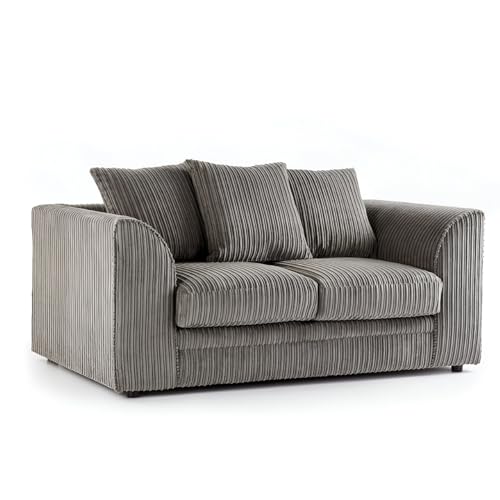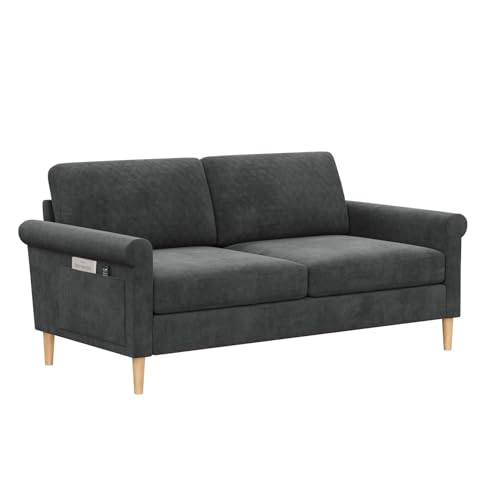Guide To 2 Seater Leather And Fabric Sofa: The Intermediate Guide Towa…
페이지 정보
Rubin 작성일24-10-31 11:53본문
 Choosing Between a 2 seater fabric sofa uk 2 seater fabric sofa sale leather and fabric sofa (Suggested Resource site)
Choosing Between a 2 seater fabric sofa uk 2 seater fabric sofa sale leather and fabric sofa (Suggested Resource site)If you're looking for a new sofa it can be tricky to choose between leather or fabric. This is especially relevant if you're new to furniture experience.
If you have children or reside in apartments The leather option might be the best choice for you. It is easy to clean and looks great in a lot of homes.
Comfort
The sofa is usually the focal point of homes and is an important purchase. You want a sofa can be used for hours and looks stunning and will stand the test of time. It isn't easy to decide between fabric and leather, but you must consider your lifestyle, budget, and your priorities prior to making a decision.
Leather is a premium material with a luxurious feel and oozes elegance in the home. It is strong, stain-resistant, resistant to pets and children, and can last for a long time if properly taken care of. However, it is more expensive in the beginning and could require regular conditioning to prevent peeling or cracking.
Fabric sofas are available in a vast range of styles, colours and fabrics. They are cheaper than leather ones. They are also more comfortable, more welcoming and can be "broken in" right from the beginning. They are more prone to dust mites or pet hairs and require more frequent cleaning. There are now hypoallergenic fabrics and new technologies that are available.
Fabric sofas can last for up to 15 years if they're properly maintained. Regular vacuuming and deep cleaning will ensure that the fabric stays clean and free of odours and spills. They also can shrink and flatten as time passes, just like leather. A majority of couches made of fabric are treated with chemicals to make them stain-resistant and flame retardant. These couches release volatile organic chemicals that can cause allergic reactions and impact indoor air quality.
Durability
When purchasing sofas, we usually choose fabrics that are incredibly durable, as this is important for those with pets and children. You don't want to pay an excessive amount upfront and end up feeling remorseful about buying after the first spill or crowbarred claws. You don't want a cheap item that isn't durable enough for regular use.
Leather, however, is extremely resilient and has an incredible strength for tears. It can last up four times longer than fabric and is innately resistant to fading, cracking, and flaking. It can also be treated to restore its natural oils and look like new.
Fabrics are cheaper and come in a variety of colors, patterns, and textures that can be adapted to any interior design scheme. They are also cleaner than leather and can withstand a significant amount of wear and tear, however they tend to be rtless.
Although you may not be able completely avoid an allergic reaction to the leather on your sofa, it can help to prevent allergens from forming by having a lint roller close by and regularly vacuuming your living area. This will reduce the amount dust, pet hair, and dust mites that are a nuisance on your sofa. If you still suffer from allergies, you can try replacing your sofa with a hypoallergenic one. For instance, a leather sofa made from vinyl or synthetic leather is less likely to hold dust mites and pet dander. It also will allow you to breathe easier.
Scratches
When buying a leather sofa, it is important to think about the amount of wear and tear you can expect from it. The amount of time a sofa is expected to last depends on the finish, color and leather quality. You should also make sure it is durable to withstand spills and other accidents. You can do this by looking for a couch with a solid hardwood frame and high-density foam cushions.
Leather can be scratched by various reasons such as stretching it, marking territory, or in the process of reliving tension. Scratches are of varying severity. They vary from minor surface scratches to deep punctures or cuts. Minor scratches can be treated by applying a conditioner for leather to the area affected. This will help to restore the balance of oil and moisture in the leather, preventing it from drying out and cracking. The amount of damage will determine the type of treatment needed.
It is a good idea for cat owners to trim their cats' nails regularly. This will prevent them from scratching on the couch. You can also retrain your cat's scratching habits by providing them with alternatives scratching surfaces, like sisal rope or cardboard. Another option is to apply a pet-safe furniture polish, which can be applied with a soft cloth to the affected area.
In addition to cleaning your leather sofa regularly, it is also a good idea to keep it from the direct sun and other sources of heat which can dry out the leather. This can cause it to crack and become difficult to repair and usually requires the reupholstery. It is recommended to use a conditioner for leather to keep the leather soft.
Smell
Leather couches can smell different from fabric. This is due to the fact that it's more porous and will absorb unwanted odors such as body odor, smoke or food easily. The good news is that the smells typically disappear over time particularly when you use a nontoxic cleaning product that is fragrance-free.
However, if the smell is strong, it could mean that there's something wrong with the foam. This is typically caused by the chemical off-gassing of polyurethane that is derived from petroleum. If this is a problem, seek out couches made from CertiPUR US certified or natural latex.
Another way to identify fake leather is to feel for bumps or a rough texture on the back of the sofa. This is a sign that the leather is bonded and not authentic top grain. You can also conduct an examination by tilting the sofa over and observing any visible upholstery backing. If it is detect any visible backing, it's likely a synthetic material like polyurethane or polyester. These will have a distinct smell than real leather.
Cleaning your leather sofa on a regular basis will keep it in good condition and smell great. This will help keep it looking its best and smelling great as well as preventing it from becoming stiff or cracked over time. Begin by vacuuming and dusting the couch with baking soda (a natural method to get rid of smells). You should do this at least every two weeks or more in order to get rid of dust and dirt build-up. Then apply a leather conditioner to help preserve your sofa's color and texture.

댓글목록
등록된 댓글이 없습니다.

















